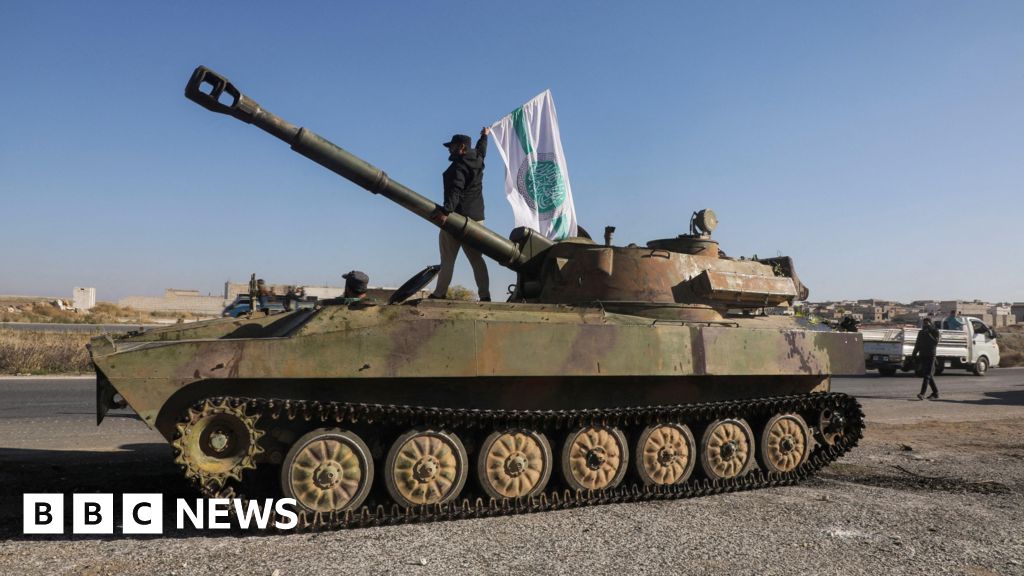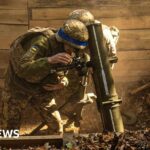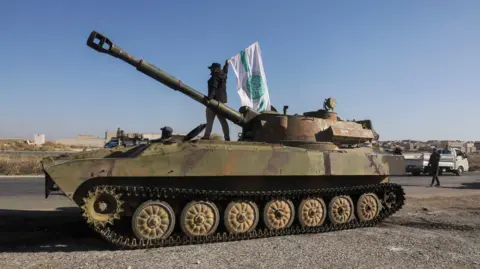 Reuters
ReutersRebel forces have launched their largest offensive against the Syrian government in years.
They have captured a swathe of land across the north-west of the country, including most of the second city of Aleppo, after the Syrian military rapidly withdrew its troops.
The rebels are now battling the military near the central city of Hama, while the government’s key ally Russia is carrying out air strikes against them.
Why is there a war in Syria?
A peaceful, pro-democracy uprising against Syrian President Bashar al-Assad in 2011 turned into a full-scale civil war that has devastated the country and drawn in regional and world powers.
More than half a million people have been killed and 12 million have been forced to flee their homes, about five million of whom are refugees or asylum seekers abroad.
Prior to the rebels’ offensive, the war had felt as if it were effectively over after Assad’s government regained control of cities with the help of Russia, Iran and Iranian-backed militias. However, large parts of the country remain out of the government’s direct control.
These include northern and eastern areas controlled by a Kurdish-led alliance of armed groups supported by the United States.
The rebels’ last remaining stronghold is in the north-western provinces of Aleppo and Idlib, which border Turkey and is home to more than four million people, many of them displaced.
The north-west is dominated by the Islamist militant group Hayat Tahrir al-Sham (HTS), but Turkish-backed rebel factions – known as the Syrian National Army (SNA) – also control territory there with the support of Turkish troops.
What is Hayat Tahrir al-Sham?
HTS was set up in 2012 under a different name, al-Nusra Front, and pledged allegiance to al-Qaeda the following year.
Al-Nusra Front was regarded as one of the most effective and deadly of the groups ranged against President Assad. But its jihadist ideology appeared to be its driving force rather than revolutionary zeal – and it was seen at the time as at odds with the main rebel coalition known as the Free Syrian Army.
In 2016, Al-Nusra broke ties with al-Qaeda and took the name Hayat Tahrir al-Sham when it merged with other factions a year later. However, the UN, US, UK and a number of other countries continue to consider HTS as an al-Qaeda affiliate and frequently refer to it as al-Nusra Front.
HTS consolidated its power in Idlib and Aleppo provinces by crushing its rivals, including al-Qaeda and Islamic State (IS) group cells, and set up the so-called Syrian Salvation Government to administer the territory.
The eventual goal of HTS is to topple Assad and establish some form of Islamic governance. But it had shown little sign of attempting to reignite the conflict on a major scale and renew its challenge to Assad’s rule – until now.
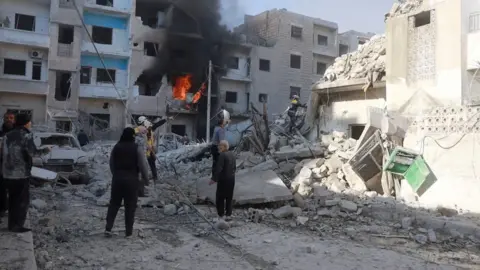 Reuters
ReutersWhy did the rebels launch an offensive?
For several years, Idlib remained a battleground as Syrian government forces tried to regain control.
But in 2020, Turkey and Russia brokered a ceasefire to halt a push by the government to retake Idlib. The ceasefire largely held despite sporadic fighting.
In October, the UN special envoy for Syria said HTS had carried out a significant raid into government-held areas, Russia had resumed air strikes for the first time in months, and pro-government forces had significantly accelerated drone strikes and shelling.
On Wednesday, HTS and allied groups said they had launched an offensive to “deter aggression”, accusing the government and allied Iran-backed militias of escalation in the north-west.
But it came at a time when the Syrian government and its allies were preoccupied with other conflicts.
The Iran-backed Lebanese group Hezbollah, which was crucial in helping Assad push back rebels in the early years of the war, has suffered recently from Israel’s offensive in Lebanon, while Israeli strikes have eliminated Iranian military commanders in Syria and degraded supply lines to pro-government militias there. Russia is also distracted by the war in Ukraine.
Without them, Assad’s forces have been left exposed.
How have the government and its allies responded?
President Assad has vowed to “crush” the rebels, referring to them as “terrorists”.
In a call with his Iranian counterpart Massoud Pezeshkian on Monday, he blamed the US and other Western countries for the offensive, saying them were trying to “redraw the map” of the region.
Pezeshkian emphasised that Iran stood “firmly alongside the Syrian government and people”, and that preserving Syria’s sovereignty and territorial integrity was a cornerstone of its regional strategy.
Kremlin spokesman Dmitry Peskov said Russia also considered the situation around Aleppo as “an attack on Syrian sovereignty”, and that it was ”in favour of the Syrian authorities bringing order to the area and restoring constitutional order as soon as possible”.
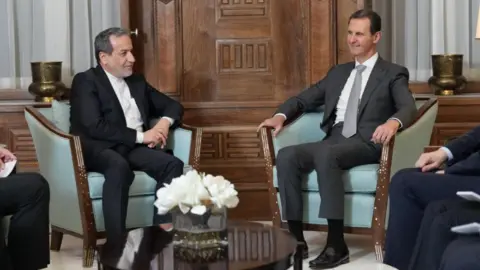 EPA
EPAWhat are Western powers and Turkey saying?
The US, UK, France and Germany – which are opposed to Assad – issued a joint statement on Monday that urged “de-escalation by all parties and the protection of civilians and infrastructure to prevent further displacement and disruption of humanitarian access”.
They also called for a “Syrian-led political solution to the conflict” as outlined in a 2015 UN Security Council resolution.
On Saturday, White House National Security Council spokesman Sean Savett said Assad’s refusal to engage in a political process and his “reliance on Russia and Iran” had “created the conditions now unfolding”.
He also insisted that the “United States has nothing to do with this offensive”.
Turkey’s Foreign Minister, Hakan Fidan, also said “it would be a mistake at this time to try to explain the events in Syria by any foreign interference” and called on the Syrian government to “reconcile with its own people and the legitimate opposition”.
